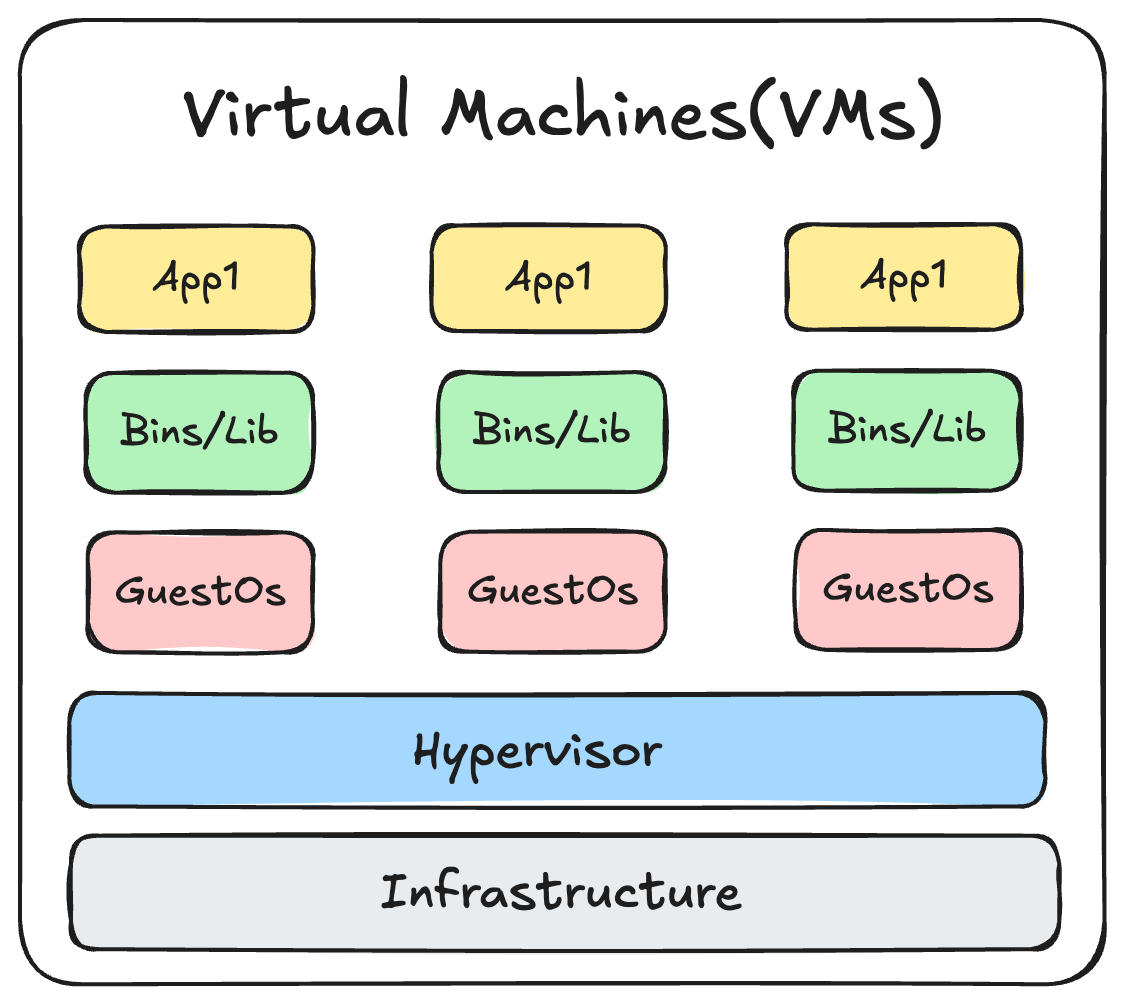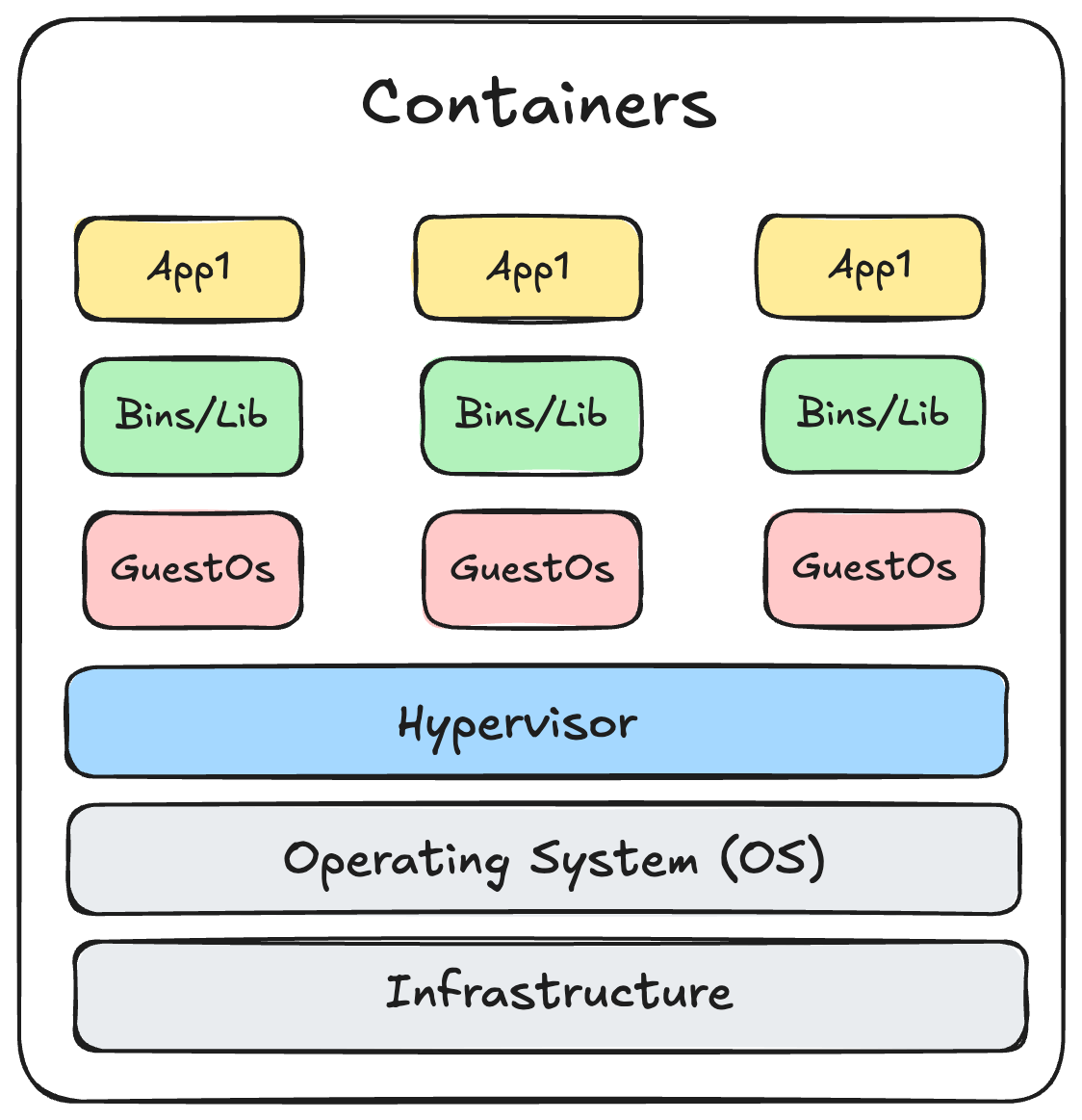📦 Containers vs 🔲 Virtual Machines
#22 Understanding the Basics, Key Differences, Architecture, and Use Cases
If you’ve ever worked in the cloud, you’ve likely bumped into two foundational technologies: containers and virtual machines (VMs). Both are everywhere—from spinning up a simple web app to orchestrating a sprawling micro-services architecture.
The tricky part? Knowing when to use which.
At a glance, both solve the same problem—running applications in isolation—but they go about it in very different ways. Understanding those differences can save you wasted resources, scaling headaches, and deployment delays.
🌩️ Every cloud engineer faces this crossroad…
Containers vs VMs — they look similar, but pick wrong and you’ll pay with wasted time, money, and endless headaches.
The truth? Most developers spend months figuring this out.
You don’t have to.
🎥 In this quick video, I break it down in plain English.
If “Docker” still feels like a buzzword, this is your no-brainer starting point.
🔲 What are Virtual Machines (VMs)?
A virtual machine acts like a fully independent computer system operating inside another physical computer. Imagine it as a self-contained apartment within a large building—complete with its own kitchen, bathroom, power supply, and utilities. Each apartment (VM) is isolated from the others.
Main Components of a VM
Hypervisor: The software layer that manages multiple VMs on a single physical server, distributing CPU, memory, and storage. Examples include VMware , Microsoft Hyper-V, KVM, and VirtualBox.
Guest Operating System: Every VM runs its own OS (Linux, Windows, etc.), just as if it were a standalone machine.
Application Layer: Applications are installed on top of the guest OS, similar to a physical computer setup.
The biggest advantage of VMs is their strong isolation. If one VM fails, it won’t affect the others. The trade-off, however, is that running a full OS for every VM consumes significant system resources, and idle resources cannot be shared across VMs.
📦 What are Containers?
Containers take a lighter approach to isolation. Instead of being like an apartment, think of them as rooms in a shared house. Each room (container) has its own private space, but all rooms share the house’s core systems like heating, water, and electricity.
Main Components of Containers
Container Engine: Software such as Docker that creates and manages containers on top of the host OS.
Shared OS Kernel: All containers running on the same host share the same operating system kernel, making them much more resource-efficient.
Application & Dependencies: A container packages the application together with its required libraries and configurations into one portable unit.
This model makes containers lightweight, fast to start, and easy to move between environments. However, because they share the host OS, they don’t provide the same level of isolation as VMs.
⚖️ Containers vs VMs: Key Differences
Here’s where the two approaches really diverge:
Isolation
VMs offer complete OS-level isolation—each one acts like its own full computer. Containers, on the other hand, provide process-level isolation while sharing the same host OS kernel.Resource Usage
VMs are heavier since each runs a full operating system. Containers are lightweight, only bundling the app and its dependencies.Startup Time
VMs can take minutes to boot. Containers fire up in seconds, making them ideal for rapid scaling.Use Cases
VMs shine for legacy apps, multi-OS environments, and workloads that demand strict isolation.
Containers excel at microservices, cloud-native apps, and scenarios where you need speed and flexibility.
Real-World Examples
Virtual Machines: AWS EC2 | VMware vSphere | Microsoft Azure VMs
Containers: Docker | Kubernetes | AWS ECS / EKS
When to Use Which?
Choose VMs when:
You require strict isolation and security boundaries.
Different operating systems need to run on the same hardware.
You’re dealing with older or legacy applications.
Workloads are stable and long-running.
Choose Containers when:
Applications need to scale up/down quickly.
You’re working with micro-services architecture.
Developers need consistent environments across dev, test, and production.
You’re building cloud-native applications.
☁️ Cloud Services Based on Each
VM-Focused Services: AWS EC2, Azure VMs, Google Compute Engine, VMware Cloud.
Container-Focused Services: AWS ECS/EKS, Azure AKS, Google GKE, Docker Desktop.
The Industry Shift: Containers & Kubernetes
The cloud world is steadily moving toward containers as the default for modern workloads. Here’s why:
Consistency: Applications run the same way across environments.
Kubernetes: Now the standard for container orchestration—automates deployment, scaling, and resource management.
Microservices: Containers make it simple to break applications into smaller, independent services.
Cloud-Native Development: Platforms like AWS Fargate and Google Cloud Run allow running containers without managing servers.
Still, VMs aren’t going away. They remain crucial for hybrid cloud setups, multi-OS workloads, and legacy systems. The most robust architectures often combine both technologies.
🔑 Final Thoughts
Both VMs and containers are vital in today’s cloud landscape.
VMs deliver complete isolation, support for multiple operating systems, and are perfect for legacy or stable workloads.
Containers provide speed, portability, and efficiency, making them the backbone of modern DevOps and microservices architectures.
The smartest cloud strategies don’t treat them as competitors, but as complementary tools. Knowing when to apply each is the real skill of a modern cloud engineer.
Thank You for Reading!
If you found this article helpful, hit the ❤️ button and consider subscribing for more content every week.
Have questions or suggestions? Leave a comment—I’d love to hear your thoughts!
Stay connected:
Follow me on LinkedIn and X to stay updated with my latest posts.



